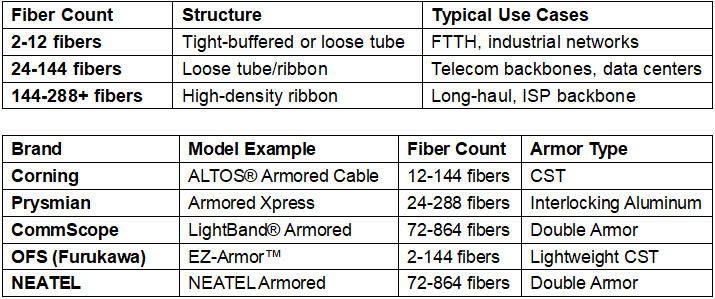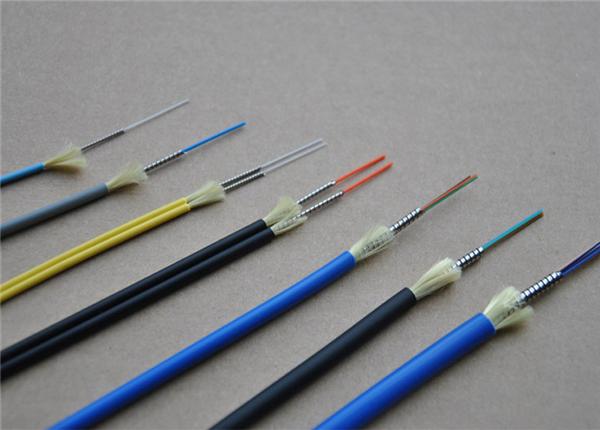🔹 Advantages Over Non-Armored Cables✔ Crush & Rodent Resistance – Survives harsh environments;
✔ UV & Moisture Resistant – Suitable for outdoor/direct burial;
✔ Long Lifespan – 20-30 years in extreme conditions;
✔ Easy Identification – Often color-coded for fiber management.
🔹 Installation ConsiderationsPulling Tension – Typically 100-300 lbs max (depends on armor type);
Bend Radius – 10x cable diameter (e.g., 20mm cable → 200mm min bend radius);
Termination – Requires armor grounding in patch panels.
 🔹 FAQ
🔹 FAQ
Q: Can armored cables be used indoors?
A: Yes, but LSZH-jacketed versions are preferred for fire safety.
Q: How to terminate armored fiber cables?
A: Strip outer jacket & armor.
Ground the armor (if required).
Splice or connectorize fibers (using fusion/mechanical splicing).
Q: What’s the cost difference vs. non-armored?
A: ~20-50% more expensive, but justified for harsh environments.

